Social Media’s Role in Redefining Beauty Standards
Social media has revolutionized nearly every aspect of modern life, and its influence on beauty standards is no exception.
For decades, beauty ideals for women have been narrowly defined. From Marilyn Monroe’s curvaceous figure in the 1950s to the ultra-thin frames of 1990s supermodels, society’s idea of the “perfect” body has shifted over time. However, a consistent theme has been the pressure on women to conform to a singular standard, often dictated by pop culture and advertising.
In contrast, social media has significantly expanded the definition of beauty. Platforms like Instagram, TikTok, and YouTube now feature creators of all sizes, shapes, and ethnicities. This inclusivity is reshaping how people view their bodies, offering representation that goes far beyond the size 0 models traditionally seen in mainstream media.
Plus Size Becomes the New Norm
As American women increasingly embrace body positivity and size inclusivity, research shows that the average body size is also changing.
A study published in the International Journal of Fashion Design, Technology and Education highlights a shift in what is considered “average.” While it was once commonly stated that the average size for American women was 14, the study reveals that the average woman now wears between a misses size 16 and 18, which corresponds to a women’s plus size 20W. Additionally, the average waist size has increased from 34.9 inches to 37.5 inches over the past two decades.
“We hope this information reaches both the industry and consumers,” said Susan Dunn, one of the study’s lead researchers, in an interview with Today. “Understanding these figures can have a profound impact on women’s self-esteem. The apparel industry needs to recognize that these women are here to stay and deserve inclusive clothing options.”
Why Are American Women Getting Larger?
The average size of American women has increased over the past several decades. According to the CDC, the average weight of an American woman is now approximately 170.6 pounds, compared to 140 pounds in the 1960s. Multiple factors contribute to this trend:
- Lifestyle Changes: Sedentary jobs, higher calorie consumption, and an increased reliance on processed foods play significant roles.
- Cultural Shifts: Greater acceptance and celebration of diverse body types have reduced societal pressure to adhere to extreme dieting.
- Genetics and Environment: Genetic predispositions and environmental factors, such as stress and access to healthy foods, also influence body size.
Beyond Appearance: A Health Perspective
While larger body sizes are increasingly celebrated, the medical implications cannot be ignored. Obesity rates have doubled since 1990, according to the World Health Organization. Social media, while fostering inclusivity, has also been criticized for promoting unhealthy lifestyles and sedentary habits that contribute to weight gain.
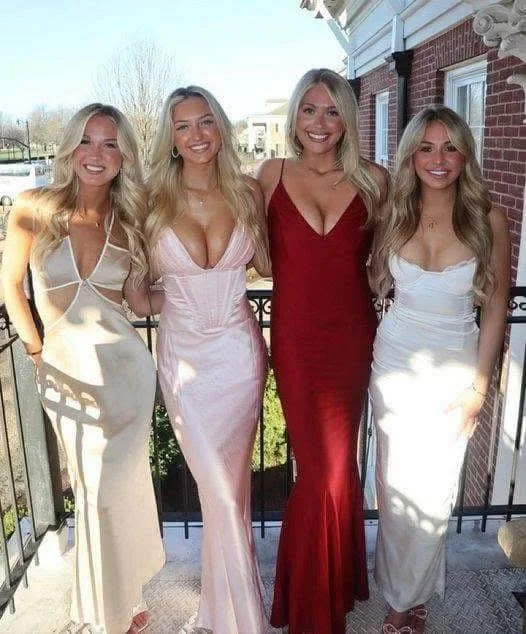
The Mayo Clinic emphasizes that “obesity isn’t just a cosmetic issue.” It is a medical condition that increases the risk of numerous health complications, including heart disease, diabetes, high blood pressure, high cholesterol, liver disease, sleep apnea, and certain types of cancer.
A New Era of Beauty
True beauty lies in celebrating individuality rather than conforming to a rigid standard. Social media has been instrumental in spreading this message and has the potential to reshape beauty norms in a positive way when used thoughtfully.
What’s your take on social media’s impact on beauty standards? Share your thoughts and pass this article along to gather more perspectives!
I Found Abandoned Twin Girls in the Forest and Took Them Home – Next Morning, I Was Shocked by What They Did to My Daughter

The morning after I brought home two abandoned twins I’d found in the woods, I heard strange noises coming from my daughter’s room. My heart nearly stopped when I rushed in, and what I saw almost left me in tears.
I’ve always believed in showing kindness to others, even complete strangers. But after what happened with those twins, I realized sometimes the kindest acts can bring unexpected miracles into your life.
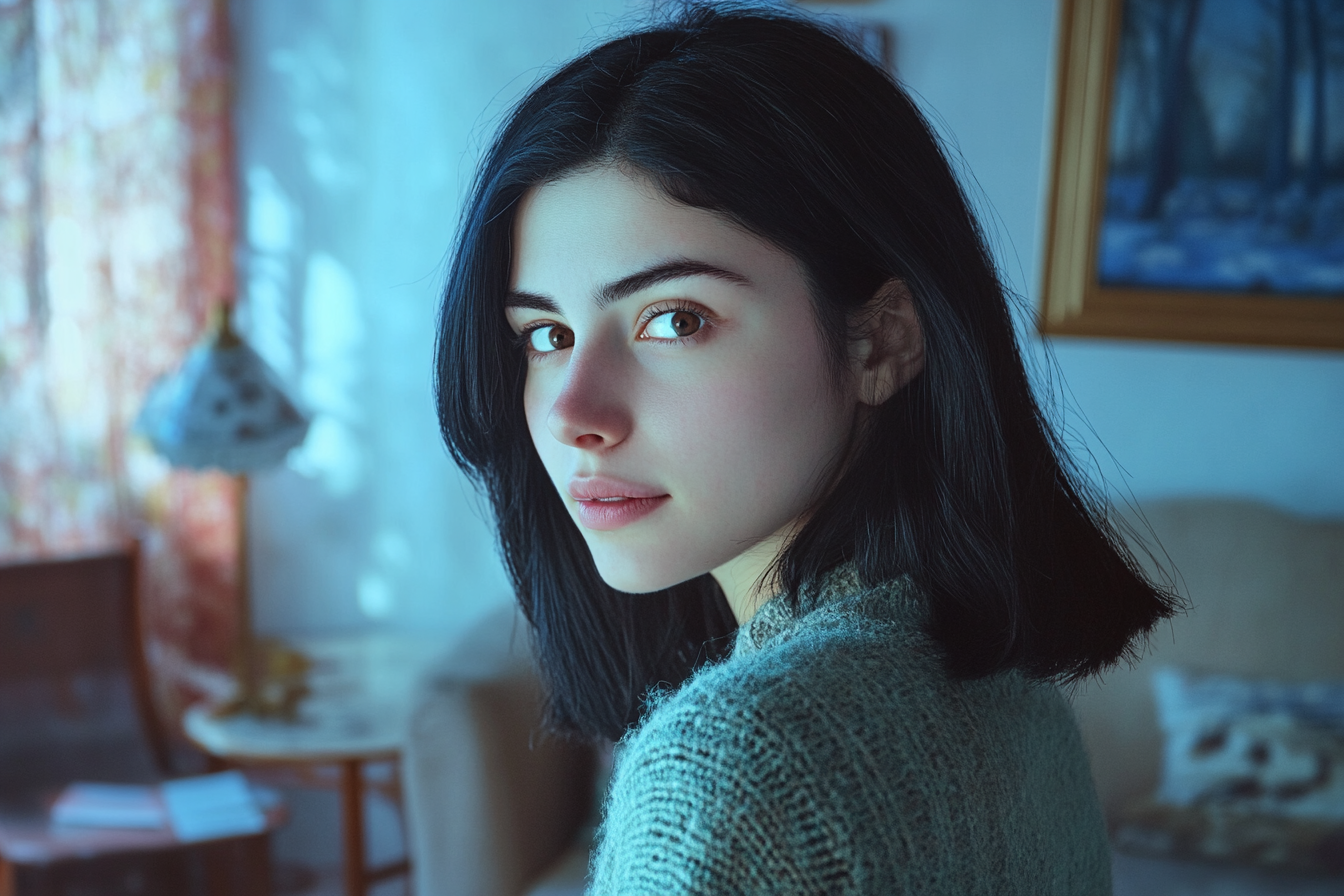
A woman standing in her house | Source: Midjourney
Let me start from the beginning.
I’m a single mom to my amazing daughter Emma. Being her mom is the greatest joy of my life, and I’ve always tried to give her everything she needs. I tried even harder after her father left us five years ago.
That’s when I discovered he’d been having an affair with a woman from his office. The divorce shattered me, but I knew I had to keep it together for Emma’s sake.
Those first few months were the hardest.
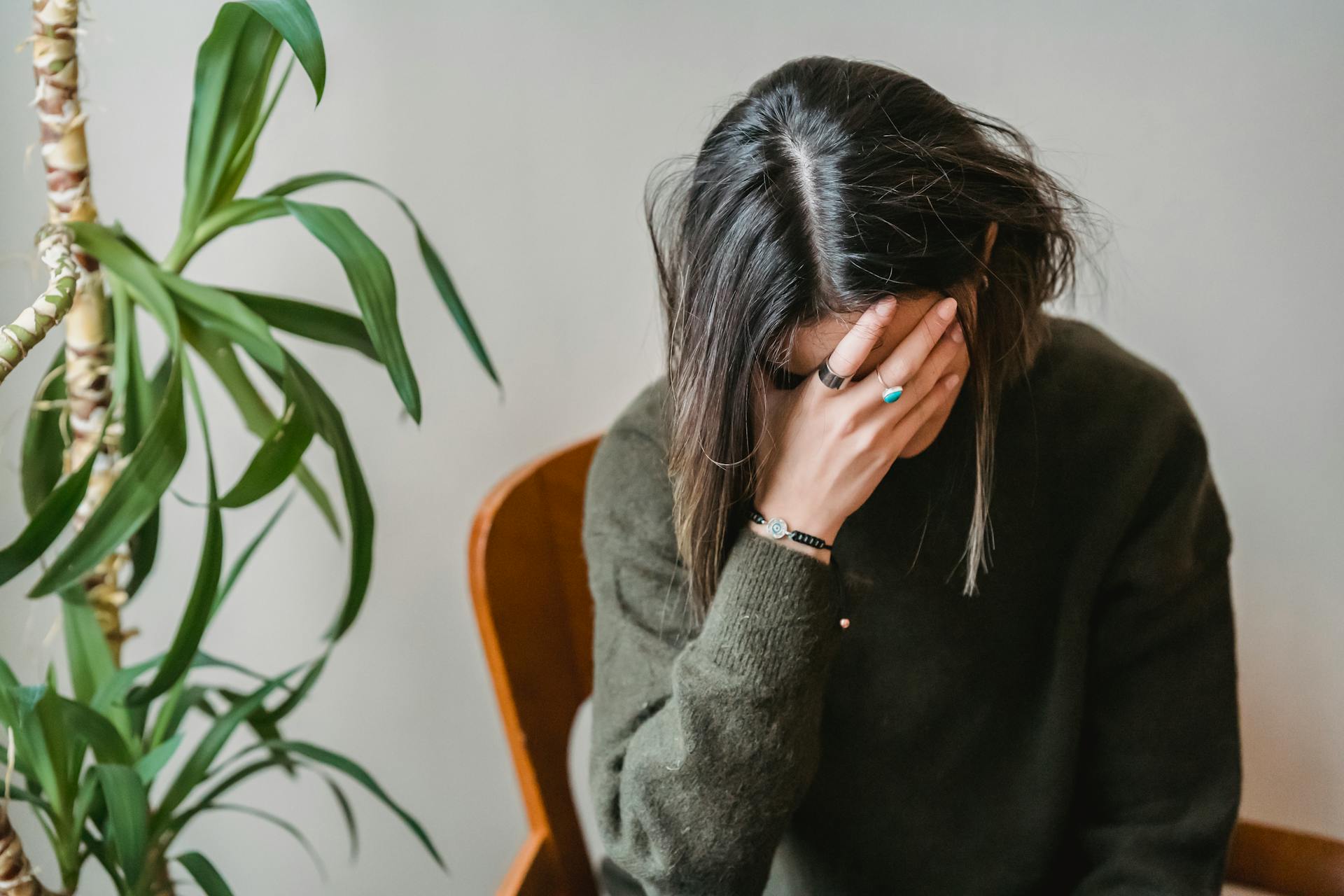
A woman crying | Source: Pexels
Emma was only five, too young to understand why her world had suddenly changed. Every evening, she’d stand by our living room window and wait for her father to return.
“When’s Daddy coming home?” she’d ask, her big brown eyes full of hope.
I’d gather her in my arms, trying to find the right words. “Sweetheart, sometimes grown-ups need to live in different houses.”
“But why, Mommy? Did I do something wrong?”
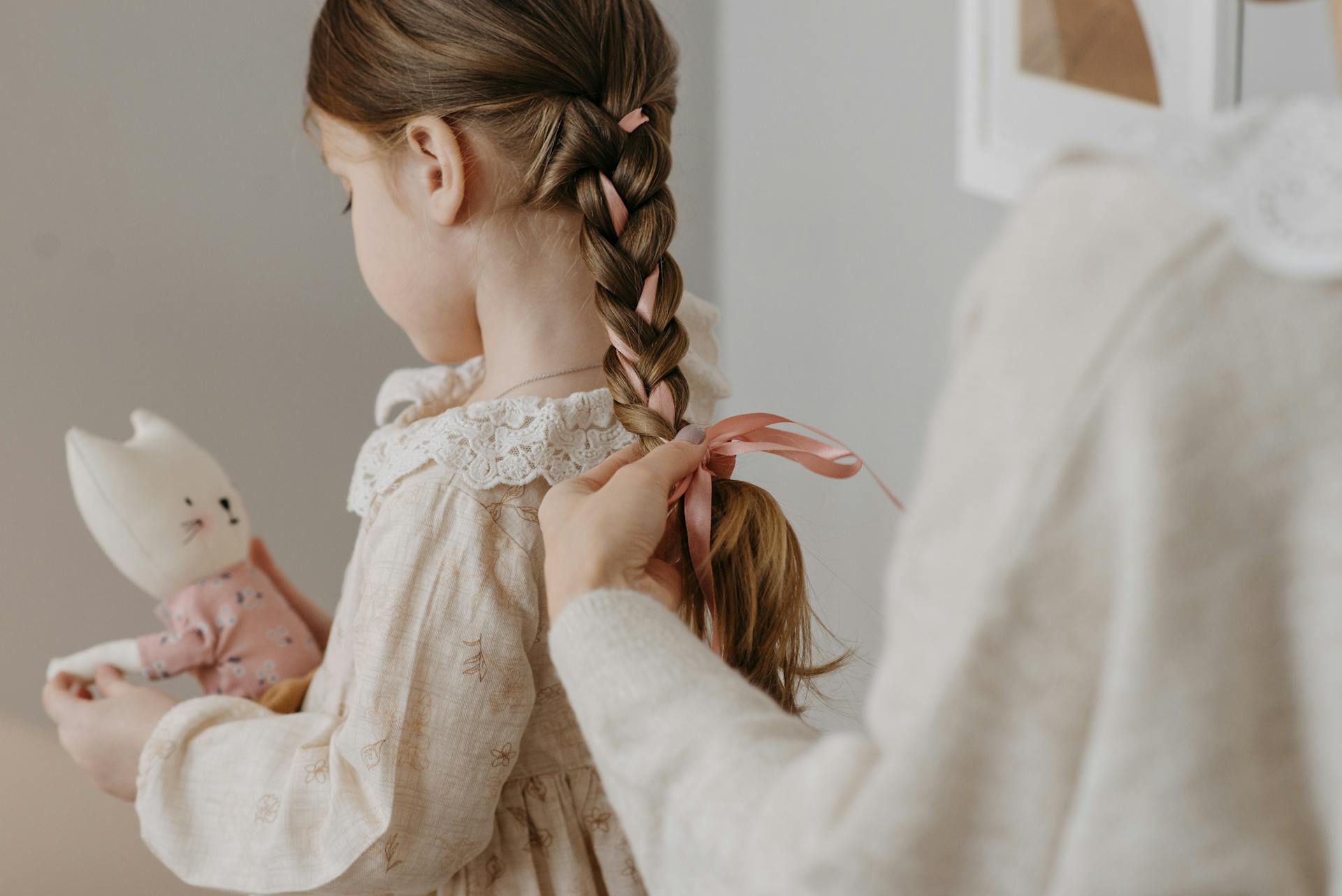
A woman tying a ribbon on her daughter’s hair | Source: Pexels
“No, baby, never.” I’d hold her tighter, fighting back tears. “This has nothing to do with you. Daddy and Mommy just can’t live together anymore, but we both love you very much.”
That last part wasn’t entirely true.
Her father made it crystal clear he wanted nothing to do with us. He didn’t fight for custody or even ask for visitation rights. Sometimes I think watching him walk away from our beautiful daughter like she meant nothing was worse than the affair.

A woman sitting in her house | Source: Pexels
But life has a way of forcing you to be strong. I picked up the pieces, worked extra shifts at work, and focused on giving Emma the best life I could.
We settled into a comfortable routine. Just Emma, me, and our lovable Labrador, Max.
Time flew as I watched my daughter grow from that confused five-year-old into a remarkably wise and intelligent ten-year-old. She has this way of looking at the world that sometimes takes my breath away.
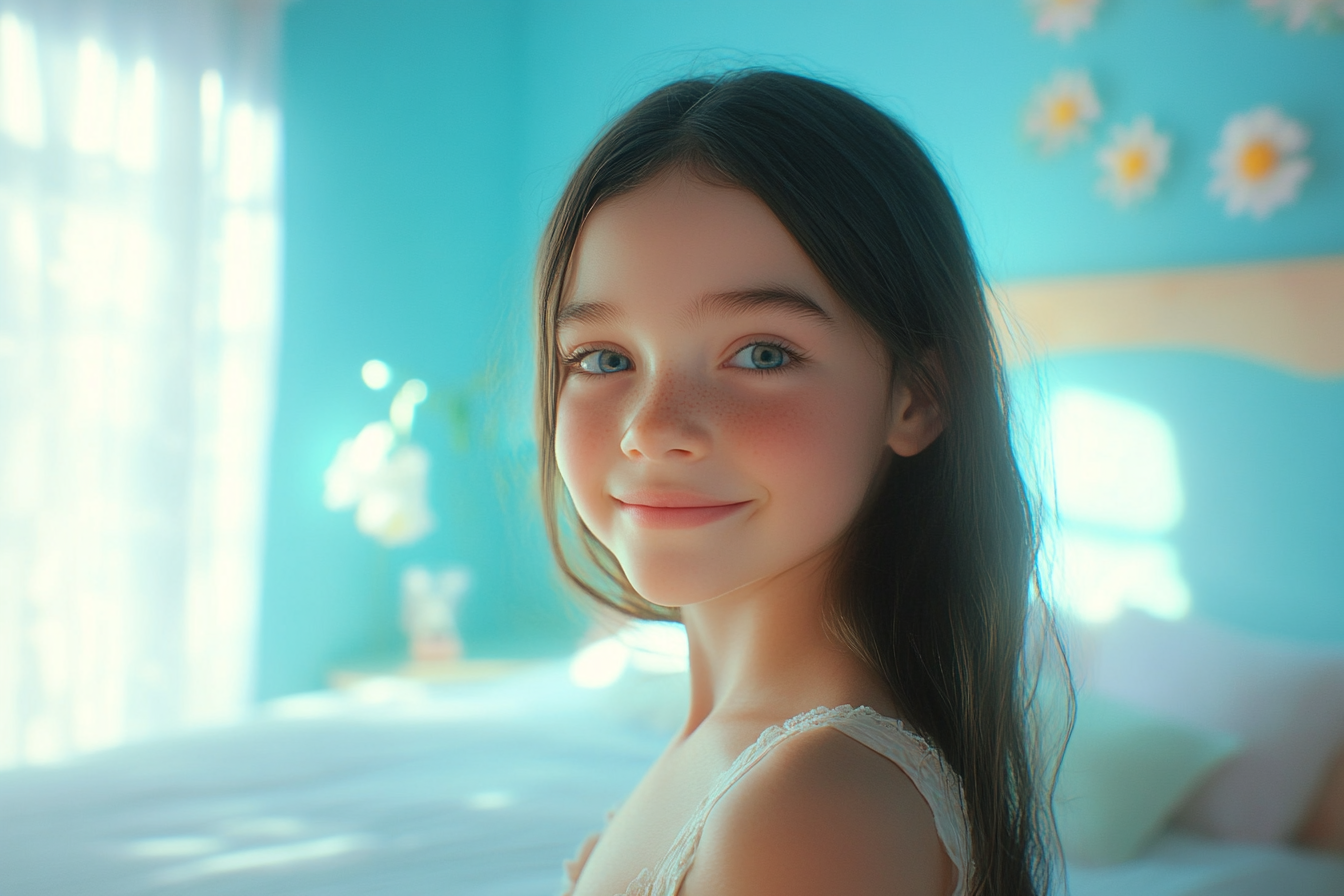
A girl in her bedroom | Source: Midjourney
Everything was finally falling into place. We had learned to live without the presence of a man in our lives, and we didn’t need anyone else to make us feel happy.
Then came the diagnosis a year ago. Cancer.
That word fell like a bomb in the doctor’s office, and I felt my world crumbling all over again. My baby girl, who’d already been through so much, now had to fight the biggest battle of her life.

A close-up shot of a doctor | Source: Pexels
Each chemotherapy session chipped away at her energy, her appetite, and her beautiful spirit. But somehow, she stayed stronger than me through it all.
A few months ago, after a particularly rough day at the hospital, Emma caught me crying in the hallway.
“Mom,” she said, reaching for my hand. “Everything’s going to be okay. I promise.”
I stared at her in amazement. “How did you get so brave?”
She gave me a weak smile. “I learned from you.”
Those words nearly broke me.
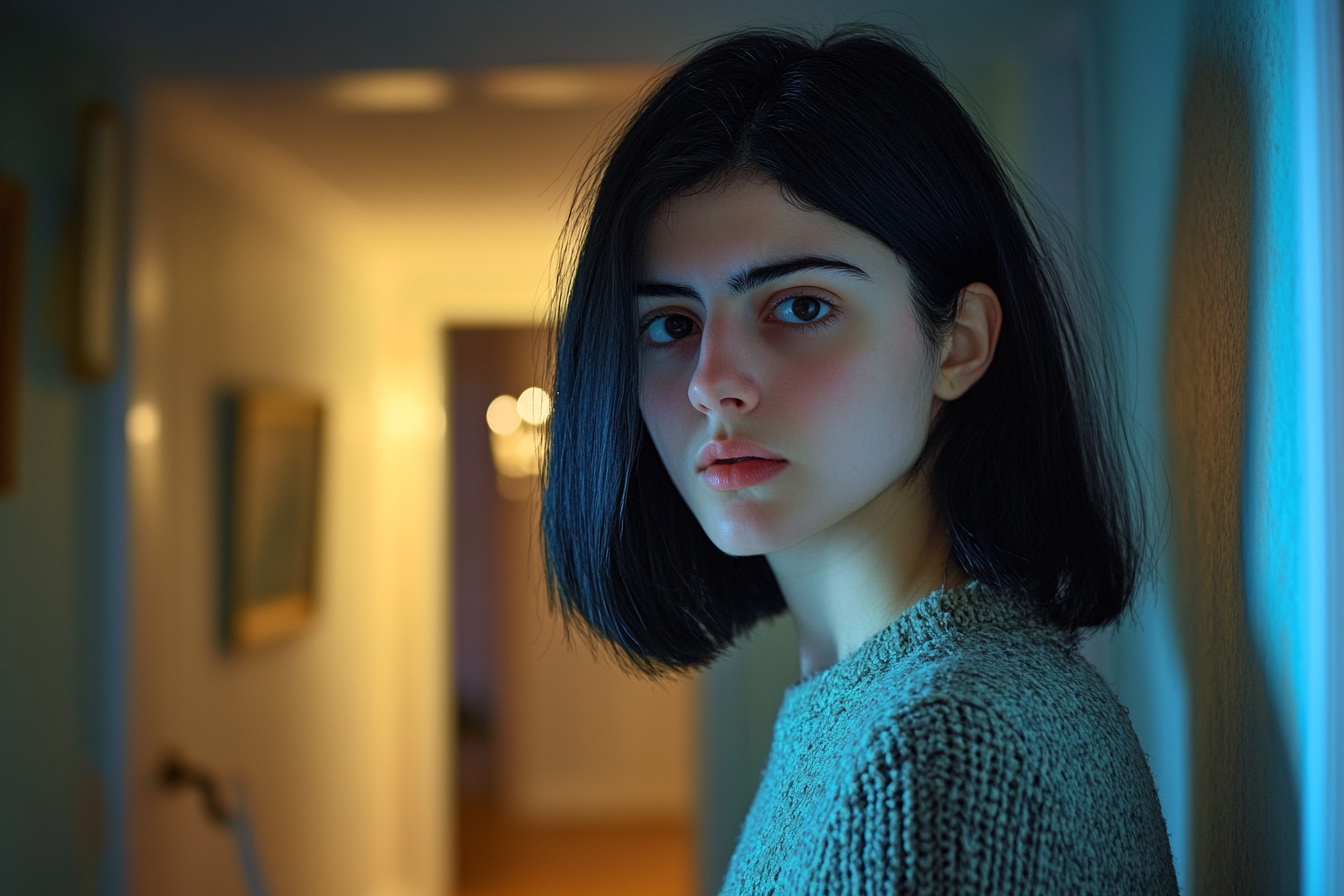
A woman in her house | Source: Midjourney
I was supposed to be the strong one here. Instead, my little girl was comforting me.
Since then, I’ve done everything I can to keep her comfortable and happy, though those moments of happiness became increasingly rare as the treatments continued.
That’s where I was in life when everything changed.
It was a freezing December evening, and I was taking Max for a walk after my shift at work. The woods near my house were silent except for the crunch of snow underfoot.

A woman walking on snow | Source: Pexels
Just as I was about to turn back, Max froze, and his ears pricked. Then, out of nowhere, he darted into the bushes.
“Max! Come back!” I shouted, chasing after him. As I pushed aside the branches, my gaze landed on something that made me freeze.
Sitting on a fallen log were two little girls, huddled together, and wearing only thin sweaters and jeans despite the bitter cold.
They looked identical with wide, frightened eyes and long dark hair dusted with snowflakes.

Twin girls | Source: Midjourney
“Hey there,” I said cautiously, keeping my voice soft. “Are you okay? Are you lost?”
One of them shook her head.
“No, we aren’t lost,” she murmured. “We live nearby… in a shed.”
I knew the shed they were talking about. It was an abandoned, crumbling structure at the edge of the woods.
“Where are your parents?” I asked, stepping closer while trying not to frighten them.
The other girl replied, “Mama left us there… a long time ago.”
I stood there as my heart pounded against my chest. I wanted to help the little girls.

A woman standing in the snow | Source: Midjourney
“What are your names?” I asked gently.
“I’m Willow,” said the first twin.
“And I’m Isabelle,” added her sister, gripping Willow’s hand tighter.
“How old are you both?”
“Nine,” they answered in unison.
Max whined softly, nudging one of the girls’ hands with his nose. They smiled and patted his head.
I couldn’t leave them out here. The temperature was dropping fast, and the forecast warned of an incoming storm.
Social services wouldn’t be open until morning anyway, I thought. I think I should take them home.
“Come with me,” I said gently. “I’ll get you warm, and we’ll figure this out tomorrow.”
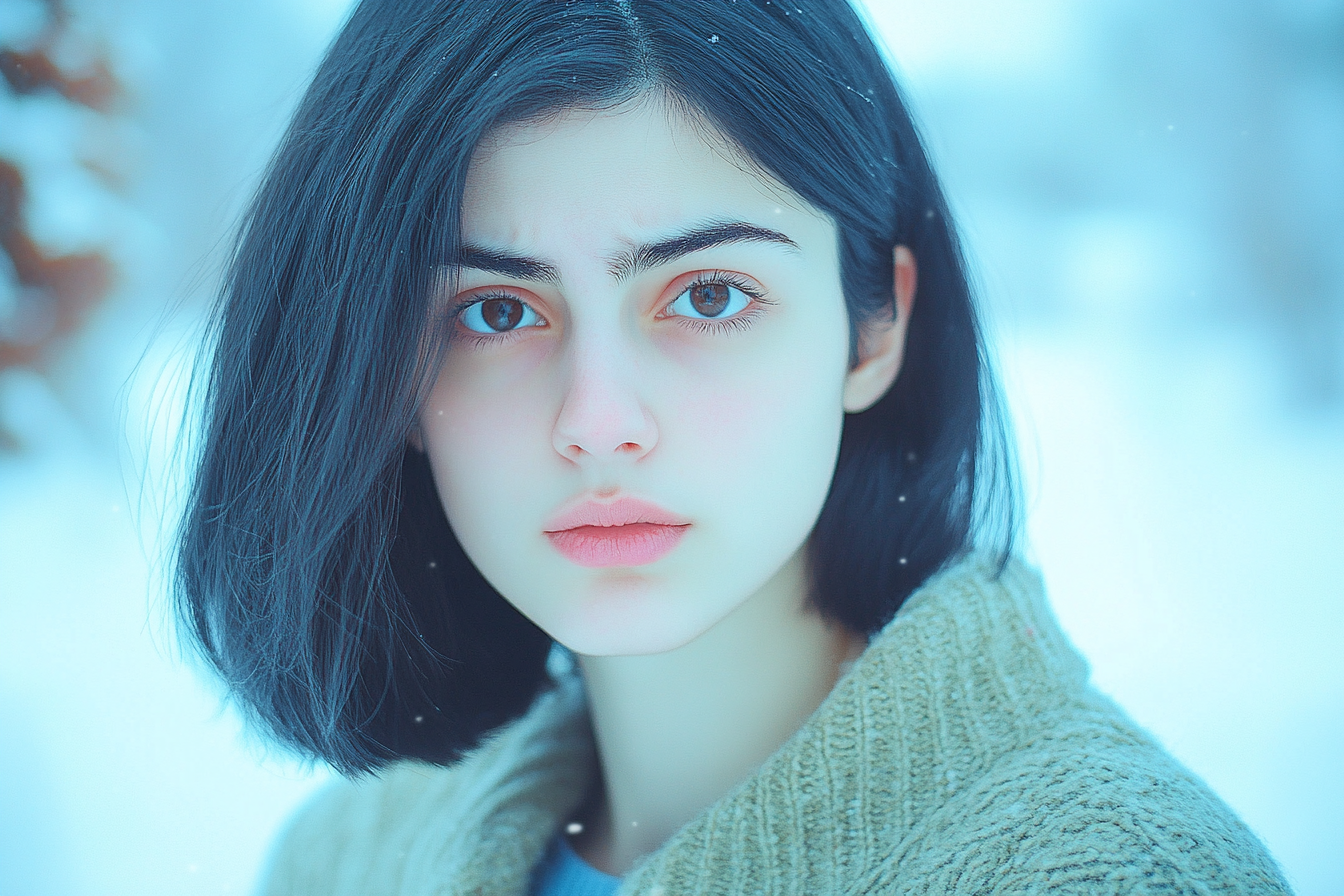
A woman looking straight ahead | Source: Midjourney
They exchanged a look, having one of those silent conversations I’d heard twins sometimes share. Finally, they nodded and stood up.
Back home, I heated up some chicken noodle soup and wrapped them in warm blankets. They sat at my kitchen table, spooning the soup carefully into their mouths.
I set up the guest room with fresh sheets and extra blankets as I thought about what to do in the morning. Emma was asleep, and I decided to wait until tomorrow to explain everything to her. I didn’t know how she’d react upon seeing them.
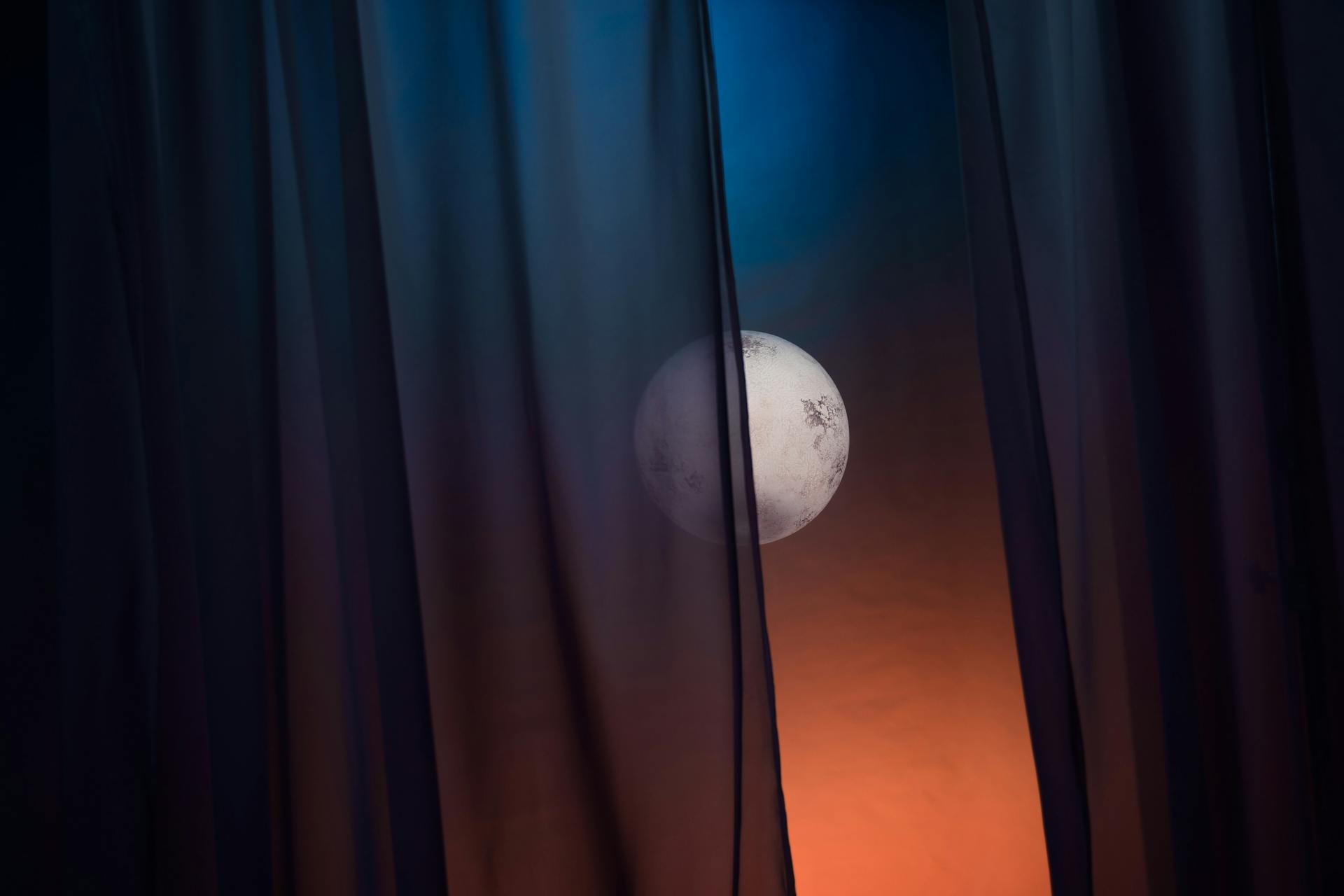
A view of the moon from a window | Source: Pexels
The twins barely spoke as I showed them to their room, but I caught them whispering to each other as I was about to leave.
“Goodnight girls,” I said and closed the door behind me.
That night, I lay awake for hours, listening to the wind howl outside. I knew I should call social services first thing in the morning, but something about these girls tugged at my heart.
Little did I know, the next day would bring a surprise that would change everything.
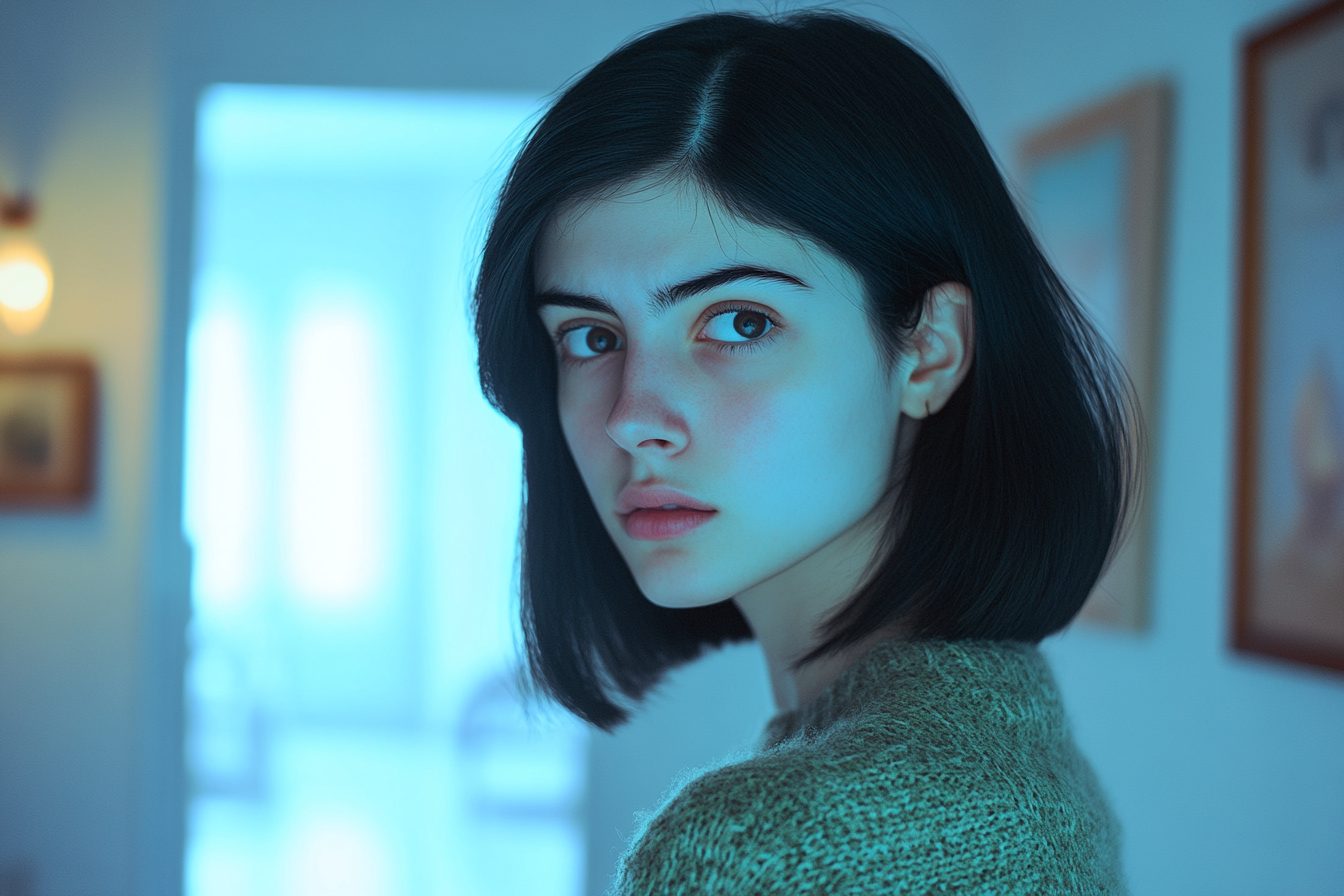
A woman in her house | Source: Midjourney
The next morning, I woke up to strange noises coming from Emma’s room. I listened closely and heard soft thuds and muffled giggles.
What’s going on? I wondered. Is it… is it the twins?
Panic shot through me as I thought about what Emma must have felt upon seeing them. What if they scared her? Or worse?
I bolted down the hall and flung the door open.
“What are you doing?! Don’t touch her!” I shouted.
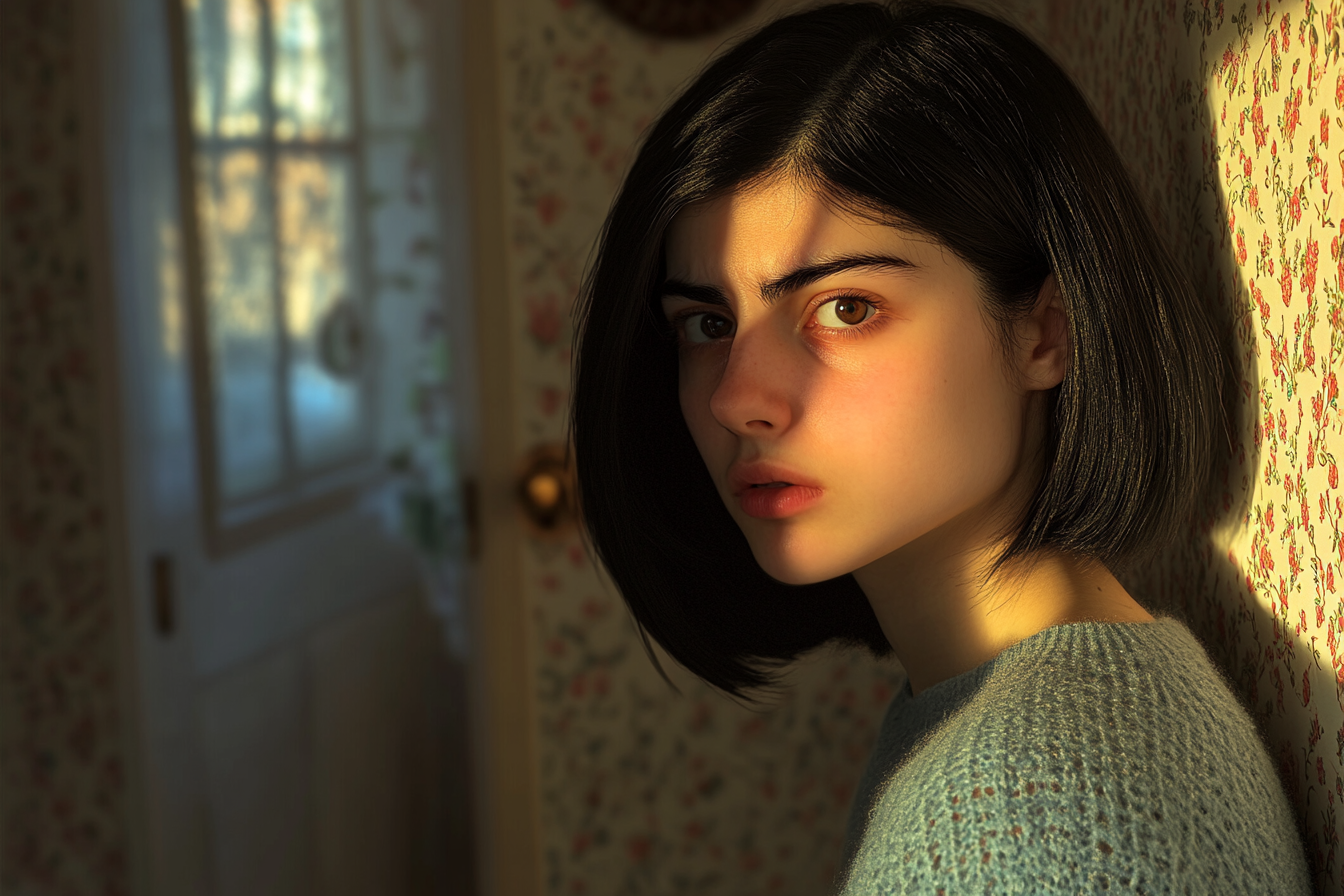
A worried woman | Source: Midjourney
The twins looked at me with eyes wide open. They were standing beside Emma’s bed, draped in makeshift costumes. They had tied my silk scarves as capes around their shoulders and one of them was holding a cardboard wand covered in aluminum foil.
But what made me stop in my tracks was Emma.
My daughter, who hadn’t smiled or laughed in months, was sitting up in bed, her eyes sparkling with delight.
“Mom, look!” Emma giggled, pointing at the twins. “They’re doing a magic show for me! Willow’s the good witch, and Isabelle’s the fairy princess!”
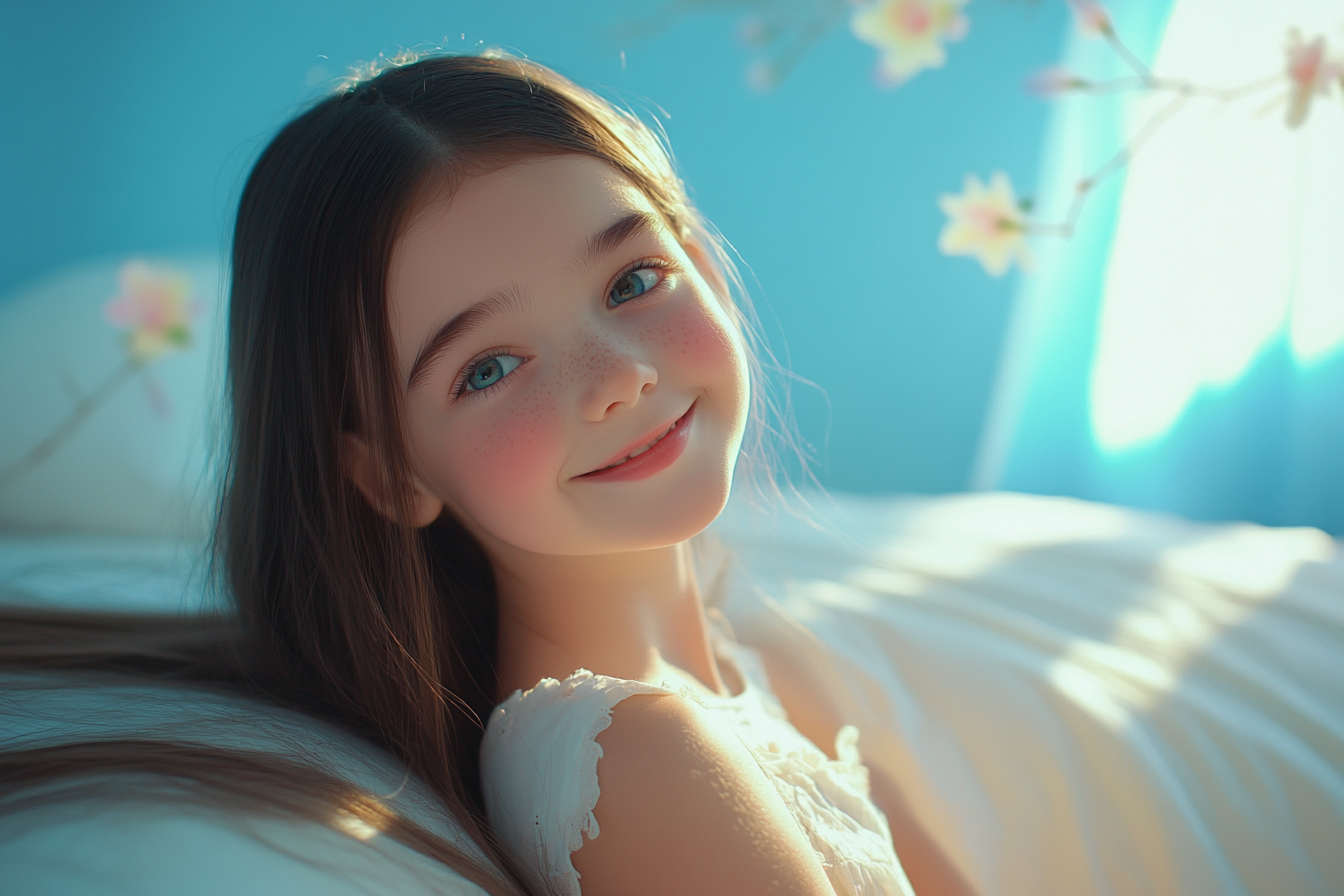
A girl sitting in her bedroom | Source: Midjourney
I wanted to cry at that point.
You see, I’d watched cancer drain the energy from my baby girl for almost a year. The treatments had taken her strength, and she barely spoke on most days. I’d started to forget what her laugh sounded like.
“Mom, they made me a crown too!” Emma held up a paper crown decorated with crayon-drawn jewels. “They say I’m the queen of the magical forest!”
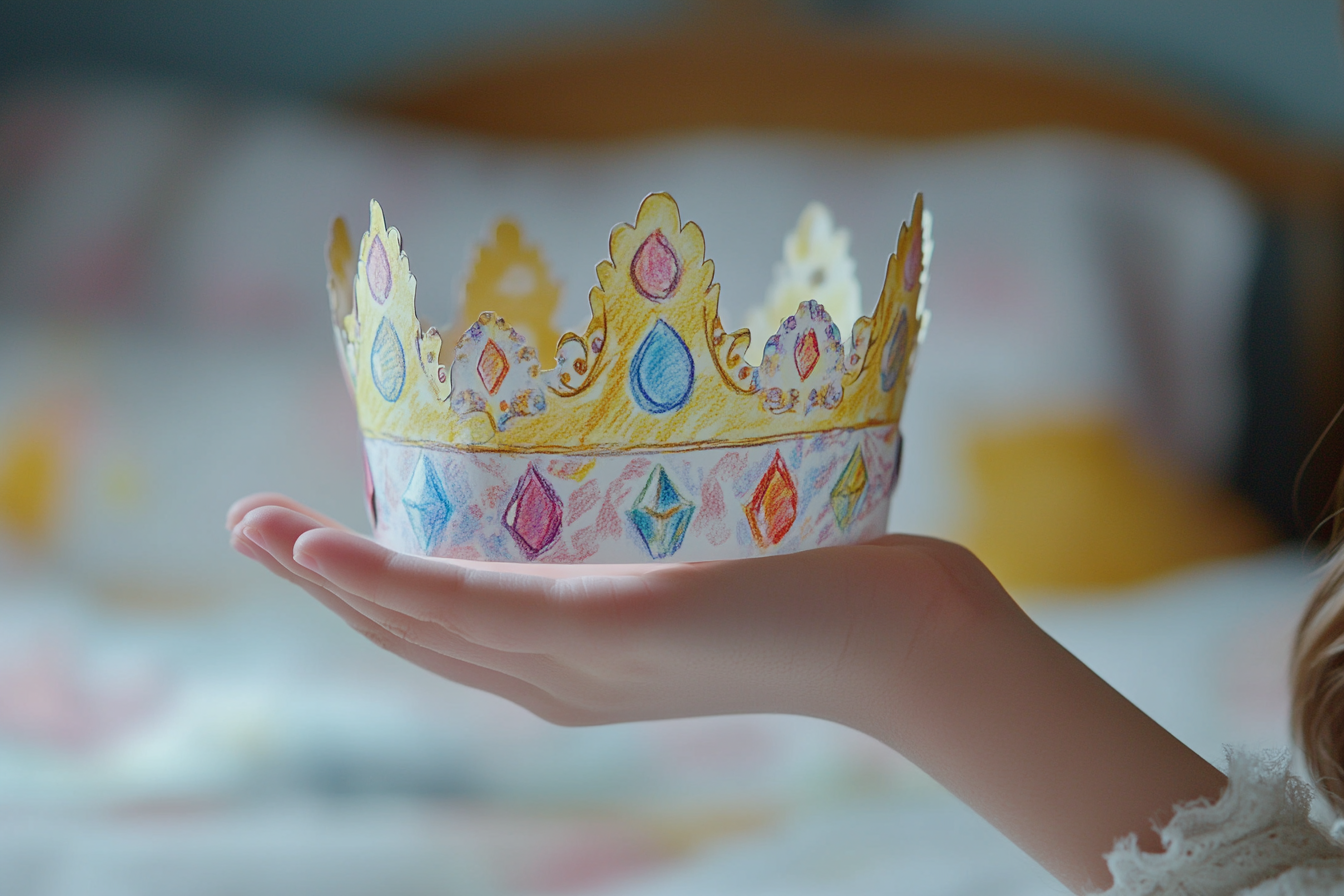
A paper crown | Source: Midjourney
“That’s… that’s wonderful sweetheart,” I managed to say. “I—”
“We’re sorry for entering her room without your permission,” Willow said. “We heard her coughing this morning and just wanted to check if she was okay.”
“She looked so sad,” Isabelle added softly. “Everyone needs magic when they’re sick. That’s what we used to tell each other in the shed.”
Tears filled my eyes as I watched Emma clap and laugh at their silly dance moves.
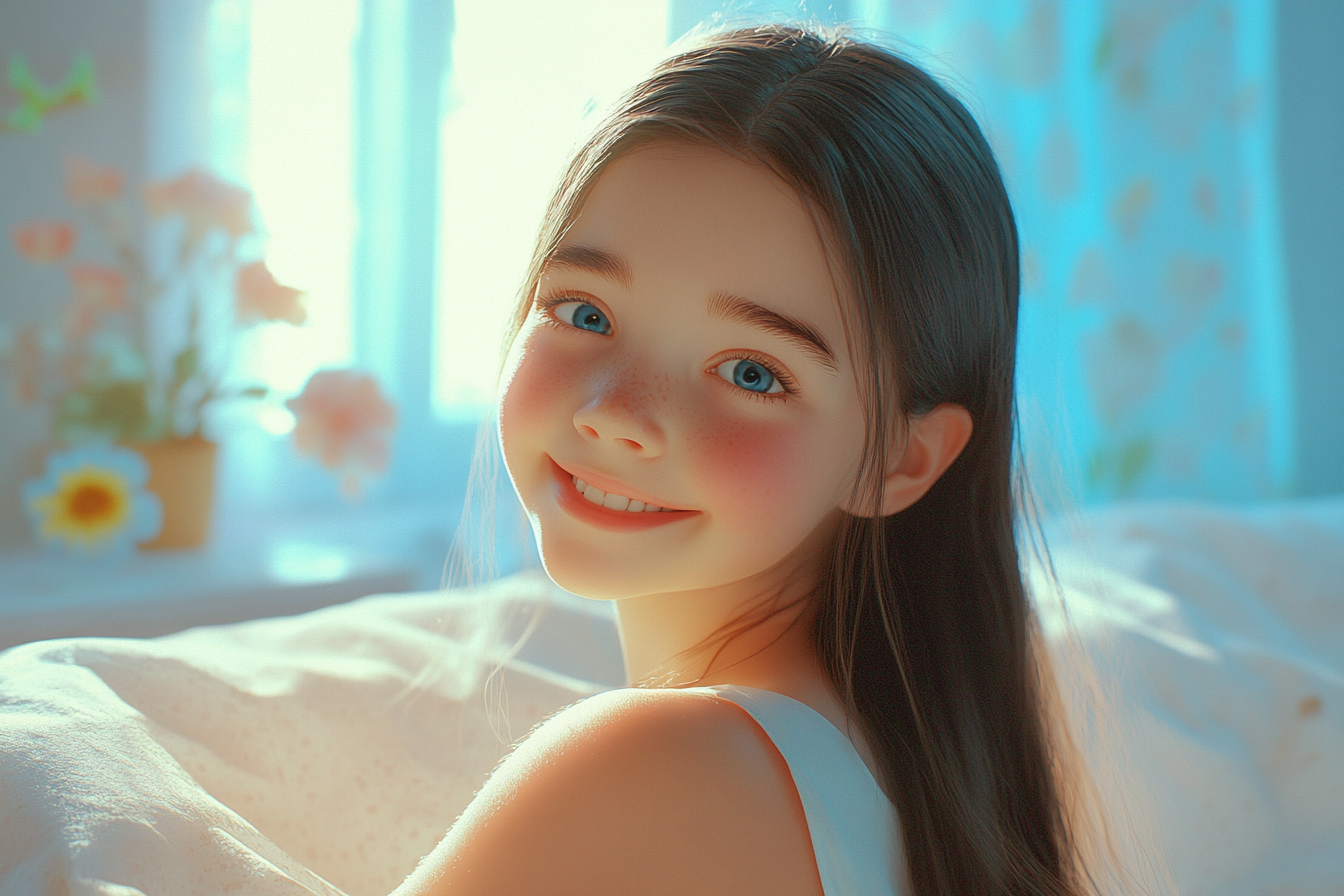
A girl smiling | Source: Midjourney
For months, I’d tried everything to lift her spirits, but nothing had worked. I was so stunned at how these two little girls, who had so little themselves, had somehow given my daughter back her joy.
“Can they stay and finish the show, Mom?” Emma asked, her cheeks flushed with excitement. “Please? They promised to teach me how to make magic too!”
I wiped my eyes and nodded, my voice cracking as I said, “Of course they can, sweetheart.”
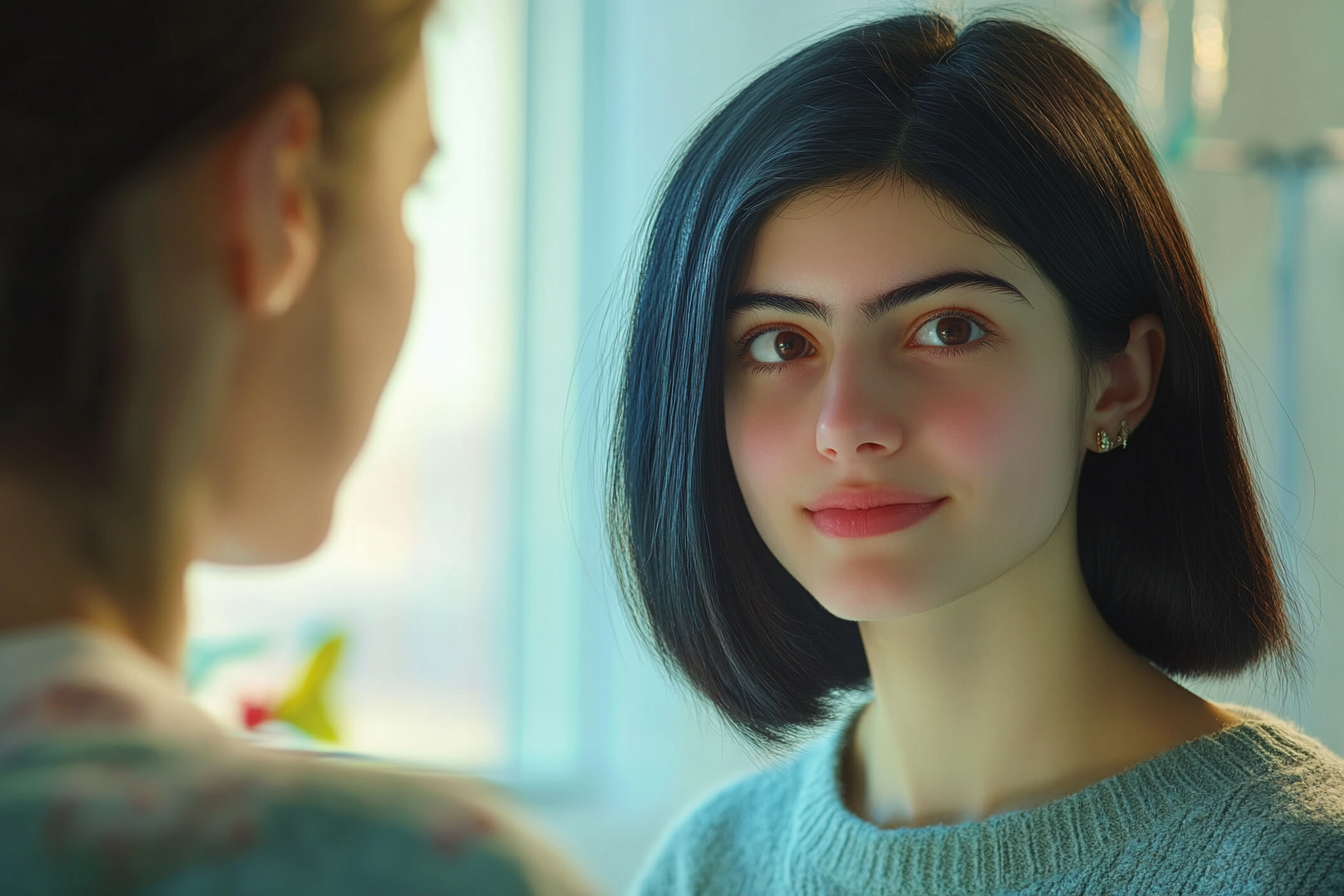
A woman smiling while talking to her daughter | Source: Midjourney
Over the next few days, something magical happened in our home. The twins spent every moment they could with Emma, telling her stories, playing games, and planning elaborate shows.
On Christmas Eve, they performed their grandest show yet. Emma sat propped up in her special chair, wearing a blanket like a royal robe, completely enchanted by their performance.
I watched from the doorway, and my heart was about to burst with joy.
That night, after the girls were asleep, I made a decision.
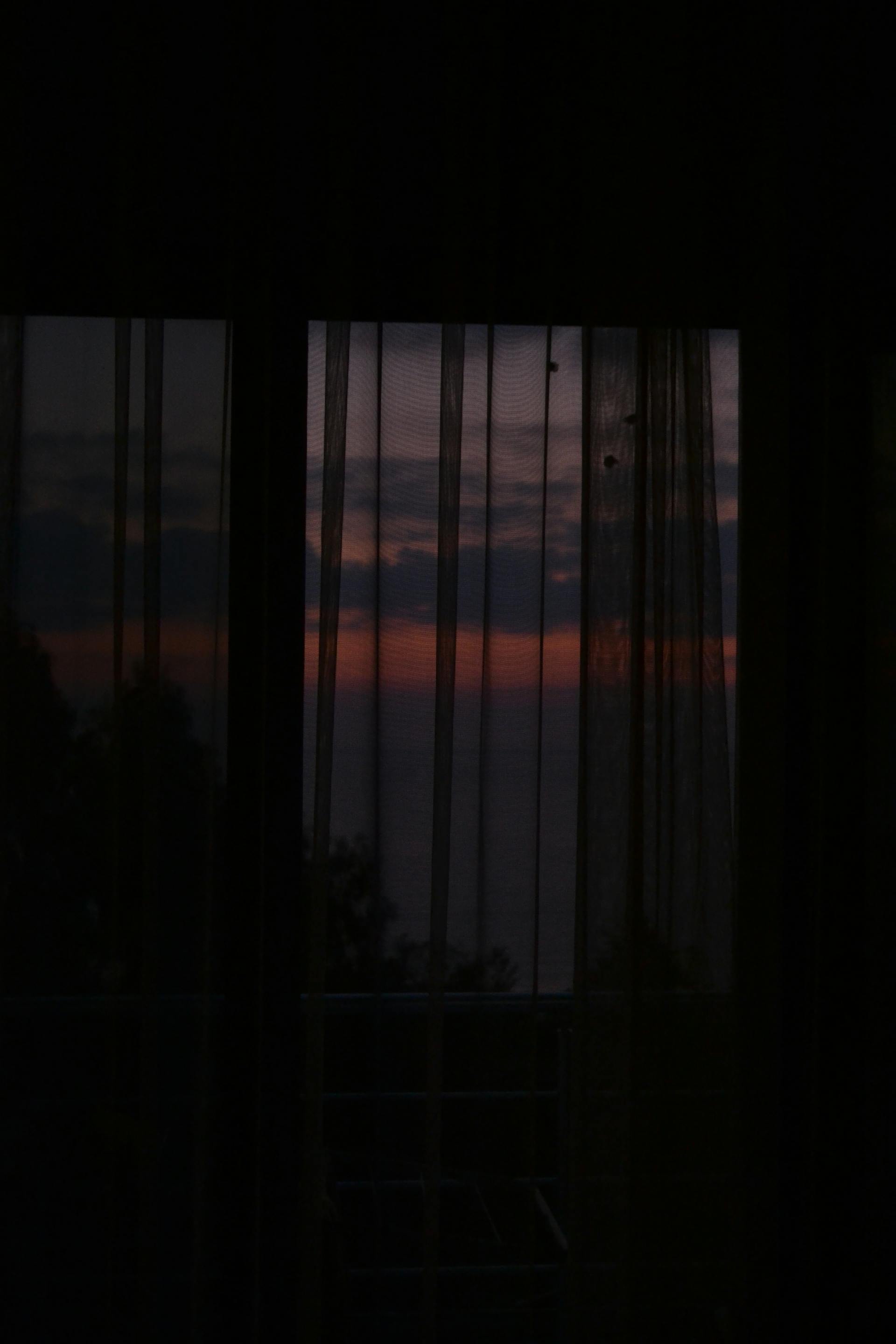
A view from a window | Source: Pexels
These twins had brought light back into our darkest days. They gave Emma the simple joy of being a child again, even amid her illness.
So, I decided to let them stay. I decided to adopt them.
The process wasn’t easy, but nothing worthwhile ever is.
Today, our family of two plus a dog has grown to include two more daughters. Sometimes I think about that cold December night and marvel at how close I came to walking past that fallen log.
But Max knew. Somehow, he knew those girls belonged with us.

A dog sitting outdoors | Source: Pexels
If you enjoyed reading this story, here’s another one you might like: Paul’s quiet weekend photography trip turned into an unexpected adventure when he discovered an old car abandoned in the forest. Inside the trunk, a mysterious parcel with a faded label led him on a quest that unraveled a decade-old mystery and altered his fate.
This work is inspired by real events and people, but it has been fictionalized for creative purposes. Names, characters, and details have been changed to protect privacy and enhance the narrative. Any resemblance to actual persons, living or dead, or actual events is purely coincidental and not intended by the author.
The author and publisher make no claims to the accuracy of events or the portrayal of characters and are not liable for any misinterpretation. This story is provided “as is,” and any opinions expressed are those of the characters and do not reflect the views of the author or publisher.



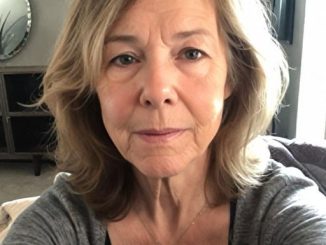
Leave a Reply